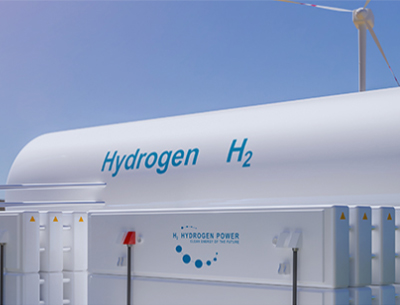Joshua Kaplan, CFA, Global Head of Research
In the search for the ultimate renewableenergy source, hydrogen stands out. Not only is it the most abundant element inthe atmosphere, but unlike wind & solar, it can be stored and transportedwith relative ease.
For these reasons1 Bank ofAmerica estimates that hydrogen will account for nearly one-quarter of ourenergy needs by 2050. And while the hydrogen energy industry is expected togenerate several trillion dollars of investment opportunity over the comingdecades, the current investable universe of pure-play hydrogen and fuel cellstocks is worth just over USD 90 billion.
Through a process called electrolysis, electricityis applied to water to split the hydrogen molecule from its oxygen counterpart.Electrolysis is a technique that can be replicated at a large scale and doneefficiently employing surplus electricity when power is abundant. The hydrogencan then be stored and transported for later use, generating energy where andwhen it is needed.
It is important to distinguish betweenso-called “grey” hydrogen versus the “green” process noted above. A majority ofhydrogen is currently produced using a byproduct of fossil fuels, most notably,methane, through a process called “steam reforming”. But increasingly,alternative energy sources like wind and solar are being used to produce theelectricity that drives the electrolysis process thus generating “green”hydrogen.
Fuel cells then convert hydrogen’s energyinto a useable form of electricity. In one portion of the fuel cell thehydrogen’s electrons and protons are separated. The protons pass through amembrane while the electrons are forced through a circuit, thus creating anelectric current. In the end, the electrons re-connect with the protons, areexposed to oxygen, and create water as the only byproduct.
Hydrogen has already been adopted in allsorts of industrial settings -- from fueling fork lifts to replacingtraditional distributed back-up power sources -- however, as the cost ofgenerating hydrogen decreases, and the industry advances, hydrogen can be used topower all types of vehicles including ships, trains, planes and passenger cars,as well as in centralized/decentralized power generation for both the home andindustrial usage alike.
To help investors capture the hydrogenenergy opportunity MVIS has launched two hydrogen and fuel cell indices thatare pure-play, diversified and investable: The BlueStar Hydrogen & NextGen Fuel Cell Index and the MVIS Global Hydrogen Economy Index. Both indicescapture leaders in hydrogen generation and fuel cell technologies in a modifiedmarket cap weighted strategy.
1“Thematic Investing: The Special 1 –Hydrogen primer,” Bank of America Securities, Global Research, 23 September2020, p.1 and 6.
Get the latest news & insights from MarketVector
Get the newsletterRelated:




